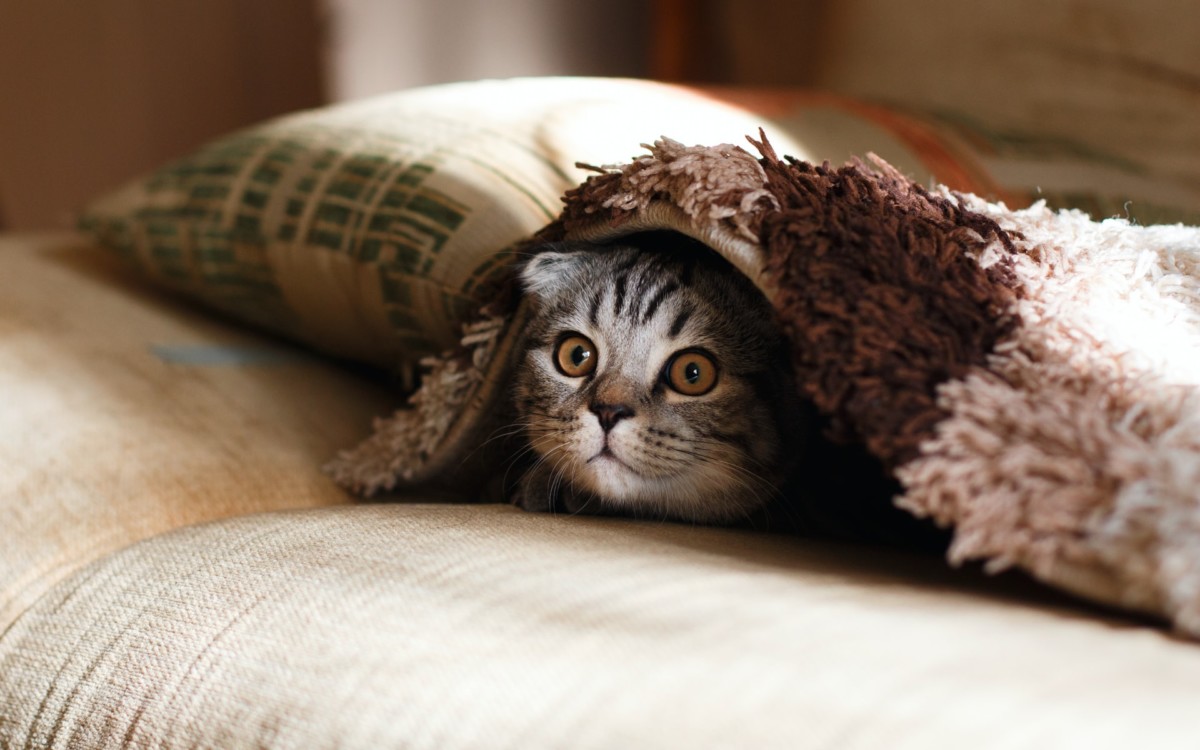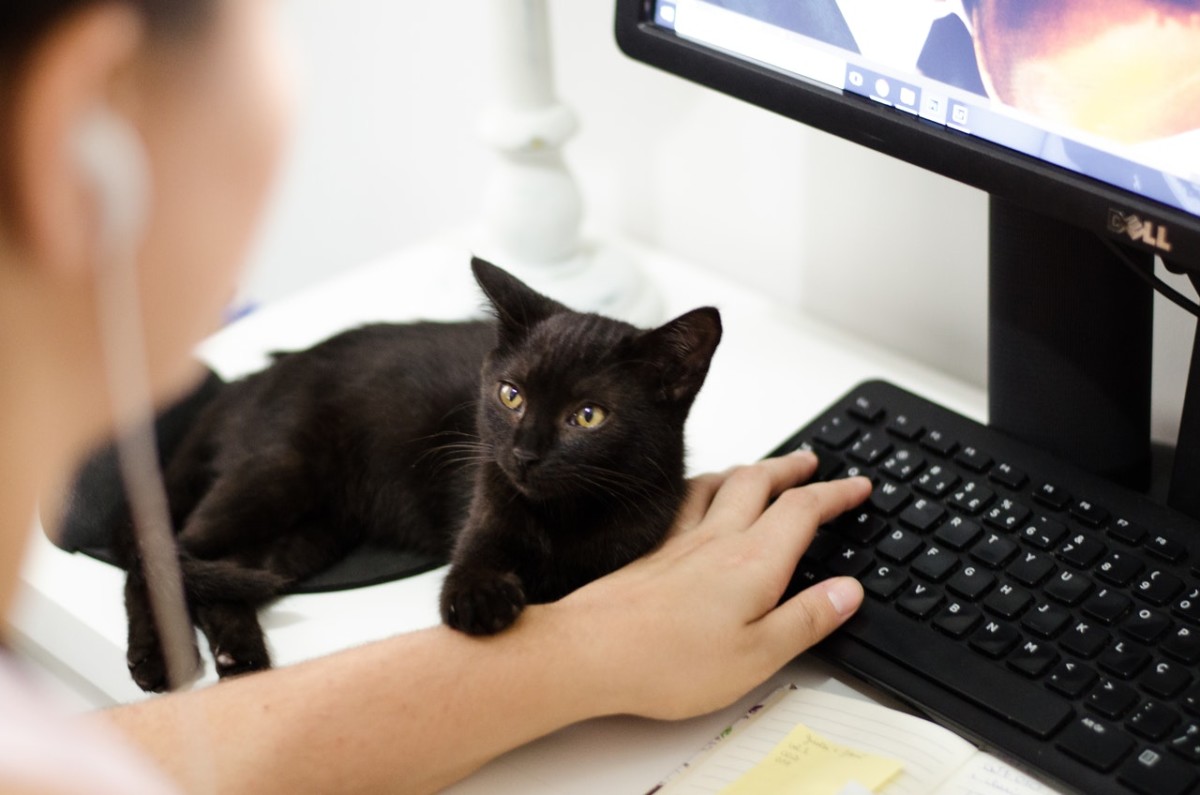As snuggly as they may be, cats are notoriously curious creatures, and preparing your space for the arrival of your new furry friend is more than just a new litter box and some toys. From researching countless articles on the web to asking friends and local shelters for advice, there’s still plenty to consider. So, where’s a new cat parent to begin?
Whether you’re renting an apartment in New York or downsizing to a condo in Miami, knowing how to properly cat-proof your space will ensure your new roommate stays happy and healthy. To help you get started, we reached out to the pros themselves for their advice on how to make your space as safe and inviting as possible.

1) Introduce a cat carrier that doubles as your cat’s bed
When it’s time to use the carrier for travel or a vet visit, your cat will see the cat carrier as a safe space, not something to run from. There are many chic options that will complement your bedroom decor and create a safe, cozy haven for your cat. –CatCon Worldwide
2) Keep an eye out for seemingly harmless items
In addition to putting away candles and electrical chords to cat-proof your bedroom, don’t overlook small and seemingly harmless items like hair ties and bookmarks with tassels. Keep these items locked away in your bedside drawer because serious issues can arise if your inquisitive cat ingests them. –Poochles India
3) Provide scratch-friendly options for your cat
Clawing furniture, curtains, and other home items can be a concern for some cat guardians. It’s important to know that declawing is an inhumane procedure involving amputating part of the cat’s toes and should not be considered an option. There are many other humane options for keeping your cat from scratching. Provide several outlets for your cat to scratch, including lay-down and stand-up options. Try Soft Claws nail caps or Sticky Paws tape on furniture to train your cat not to scatch there. Aluminum foil can also be used to train cats not to scratch. –Mississippi Spay And Neuter
4) Find ways to keep them safely entertained while you’re away
Keep your cat entertained while you’re away by making it easy for your cat to sit in a window–but keep your cat safe by getting those blind cords up out of reach. Cords pose a hanging threat to cats, so it’s best to opt for cordless blinds or pull your blinds up and secure the cord in a tight bundle safely away from your cat. Also, cats are natural hunters, so keep your cat busy by providing some opportunities to “catch” their food. Interactive feeders let you hide food or treats, requiring your cat to work for the food by moving toy pieces. Create your own challenge by tucking some treats or a toy mouse inside a cardboard box with holes cut in the top and sides so your cat can fish for the goodies. –Dog Tipper
5) Designate a cat corner to enjoy each other’s company
Small spaces can make cats seem annoying because they may end up in your way while trying to be as close to you as possible. Create spaces near you that are specifically for your cat, such as a cozy box on the corner of your desk, a kitty shelf, or a perch on the wall in the kitchen. These spaces allow your cat to be close to you but not in your way. –Animal Rescue of the Rockies
6) Be aware of common household hazards
Cat-proofing an apartment is like toddler-proofing. After all, cats are curious – they like to climb and explore and can be destructive to the point of injuring themselves. Most articles advise hiding cell phone cords and shiny objects cats can ingest, tying blind cords, making sure window screens are secure, and closing windows when you’re not home. However, the more subtle yet fatal hazards are flowers like lilies which cause kidney failure. Other hazards include plastic or store bags that cats get around their necks and strangle them as they frantically attempt to get them off. –Cats Meow Resort
7) Have the correct cat-to-litter box ratio and provide ample safe spaces
Plan to have one more litterbox than you have cats (for example, two cats, three litterboxes). Also, pay attention to subtle signs that your cat might be stressed out. Owners should know that cats urinating inappropriately- outside the litter box or marking- are generally trying to express that they’re stressed out and often start to form crystals in their urine from that stress. Ensure that they have a safe, quiet place to retreat to if needed. Places where they feel like they can watch and not be seen are ideal, especially for shy or anxious cats, and they usually prefer either very high, secluded areas or low dark ones. Utilizing calming products like Feliway diffusers in those safe spaces can reinforce those areas as a refuge. –Valley Veterinary Clinic
8) Familiarize yourself with plants that are toxic to cats
Cats have a tendency to nibble on flowers and leaves from houseplants, and they usually can’t tell if their new snack is harmless or dangerously poisonous. Lilies, Daffodils, Tulips, Oleander, and Rhododendrons are just a few of the many common houseplants that can cause various gastrointestinal problems as well as organ failure, seizures, or even death. So, before you bring home your new pet, make sure your house and outdoor garden are 100% clear of plants that are proven to be poisonous to cats. -Sean Levinson on behalf of Pilots To The Rescue
9) Prevention is key
Make sure anything you don’t want your cat to get into is safely put away, both in your room and throughout your home. It’s also a good idea to put something into the room that smells like you so that your cat can get to know you when you aren’t in the room with it. –Florida Animal Friend
10) Make the transition into their new home as smooth as possible
Smooth transitions are created by understanding what your cat needs during this stressful time, and a supportive environment can make a big difference in helping your cat feel safe and happy. Pick a room to use as a “Home-base” during the transition and provide (multiple) hiding spaces, such as a cardboard box, a rug under the bed, or a cushy cat house with easy access to food, water, and a litter box. Bring along familiar items that already have your cat’s scent on them, like a favorite blanket, a cat bed, or a pillow for comfort and reduce stress. Last but not least, follow your cat’s lead. Some cats will want to be petted or brushed and cuddle more to feel calm, while others may prefer to hide until they have settled in. Throw in a few cat toys and a scratcher with some catnip, and you’ve got yourself a cozy cat. –The Pet Cottage


 United States
United States Canada
Canada